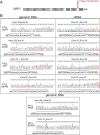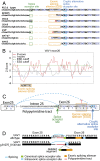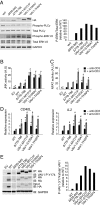Activating mutations and translocations in the guanine exchange factor VAV1 in peripheral T-cell lymphomas
- PMID: 28062691
- PMCID: PMC5278460
- DOI: 10.1073/pnas.1608839114
Activating mutations and translocations in the guanine exchange factor VAV1 in peripheral T-cell lymphomas
Abstract
Peripheral T-cell lymphomas (PTCLs) are a heterogeneous group of non-Hodgkin lymphomas frequently associated with poor prognosis and for which genetic mechanisms of transformation remain incompletely understood. Using RNA sequencing and targeted sequencing, here we identify a recurrent in-frame deletion (VAV1 Δ778-786) generated by a focal deletion-driven alternative splicing mechanism as well as novel VAV1 gene fusions (VAV1-THAP4, VAV1-MYO1F, and VAV1-S100A7) in PTCL. Mechanistically these genetic lesions result in increased activation of VAV1 catalytic-dependent (MAPK, JNK) and non-catalytic-dependent (nuclear factor of activated T cells, NFAT) VAV1 effector pathways. These results support a driver oncogenic role for VAV1 signaling in the pathogenesis of PTCL.
Keywords: VAV1; gene fusion; mutation; peripheral T-cell lymphoma.
Conflict of interest statement
The authors declare no conflict of interest.
Figures




References
-
- de Leval L, Gaulard P. Pathology and biology of peripheral T-cell lymphomas. Histopathology. 2011;58(1):49–68. - PubMed
-
- Rüdiger T, Müller-Hermelink HK. [WHO-classification of malignant lymphomas] Radiologe. 2002;42(12):936–942. German. - PubMed
-
- Armitage JO. The aggressive peripheral T-cell lymphomas: 2015. Am J Hematol. 2015;90(7):665–673. - PubMed
-
- Savage KJ, Ferreri AJ, Zinzani PL, Pileri SA. Peripheral T-cell lymphoma—Not otherwise specified. Crit Rev Oncol Hematol. 2011;79(3):321–329. - PubMed
Publication types
MeSH terms
Substances
Grants and funding
LinkOut - more resources
Full Text Sources
Other Literature Sources
Molecular Biology Databases
Research Materials
Miscellaneous

